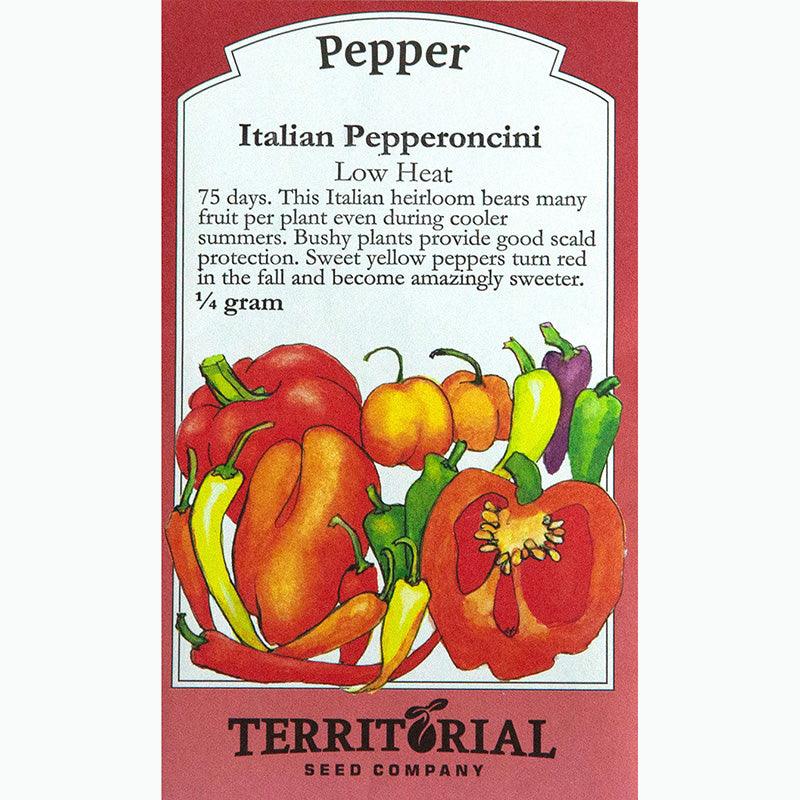Item Number: SNV1520
Italian Pepperoncini Seeds
Pickling Pepper Classic
The Italian Pepperoncini plant, also known as the Tuscan Pepper, originates from Italy and belongs to the Capsicum annuum species. While it has no distinct subspecies, it’s celebrated for its mild heat, tangy flavor, and culinary versatility. Often compared to bell pepper, banana pepper, and Hungarian wax varieties, the pepperoncini pepper stands out with its unique flavor balance and low heat index of 100–500 Scoville Heat Units.
Growing to 18–24 inches, the Italian Pepperoncini plant features lush green foliage and compact, bushy growth. The slender, curved peppers measure 2–3 inches and ripen from green to red. Some cultivars, like Golden Greek, develop a yellow-green hue and crisp texture, making them perfect for pickling.
Gardeners value Italian pepperoncini seeds for their productivity and ease of growth. Start pepperoncini seeds indoors 8–10 weeks before the last frost at 70–85°F (21–29°C), then transplant to full sun after frost risk has passed. These plants thrive in well-draining, slightly acidic to neutral soil (pH 6.0–6.8) with consistent moisture, and benefit from staking due to their heavy fruit set.
With their mild tang, pepperoncini peppers are a flavorful addition to pizzas, sandwiches, antipasto, and especially a classic Greek salad, where their bright crunch complements olives, feta, and fresh vegetables. Whether you're a home gardener or a food lover, growing from Italian pepperoncini seeds promises a delicious and satisfying harvest.
Check Your Zone Compatibility:
Compatible with your zone.
Growing Zone for

Our Guarantee To You
Since 1976, we've served our customers at every stage of growing. Please contact us at any time. We are happy to support and assist you.
Shipping Information
Shipping Information
Shipping Weight: 0.01 lb
Dimensions: 4.5"L x 3.125"W x 0.1"H
Features
Features
- Container Compatible
- Heirloom
- Open-Pollinated
Characteristics
Characteristics
Planting & Care
Planting & Care
Soil & Water: Peppers require deeply-worked, well-drained soil with plenty of added organic matter and a pH of 6.0-6.8. Water deeply, but don't over water.
Planting & Growing: Start seeds indoors 8 weeks before the last frost. Direct seeding is not recommended. Stake to keep fruit off the ground and mulch for disease and weed control.
Harvesting & Storage: Harvest the first fruits early to encourage continued production through the season. Cut (don't pull) the fruit from the stems.
Useful Information
Useful Information
Guarantee
Guarantee
Share






